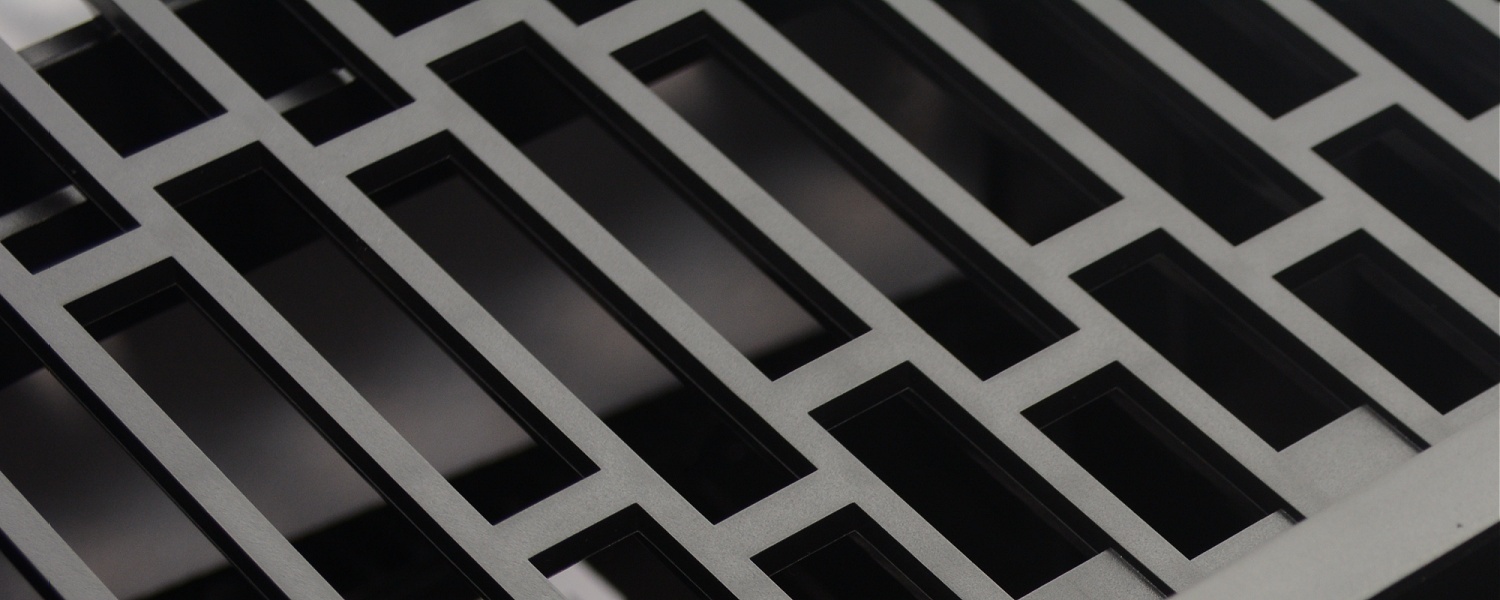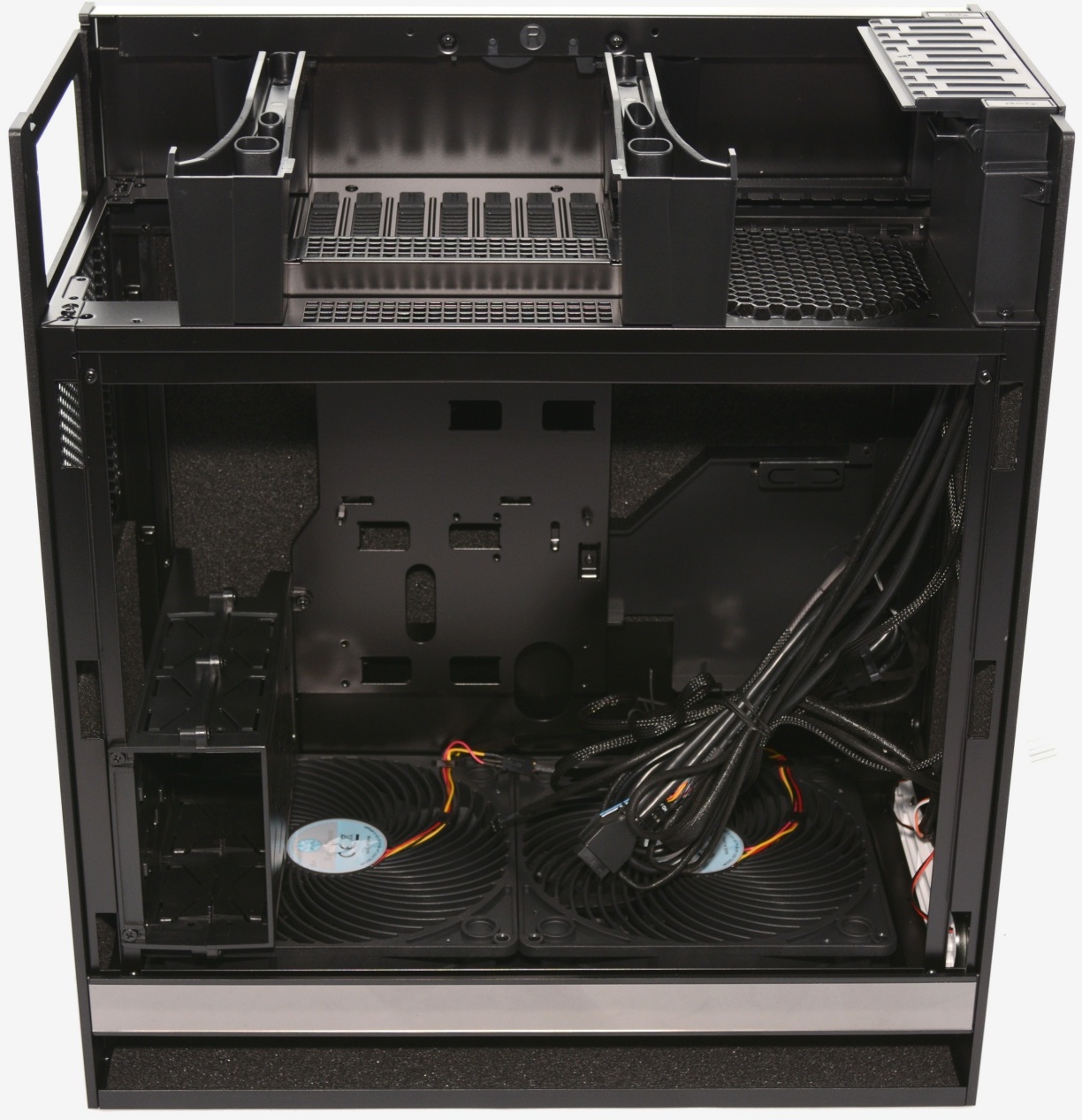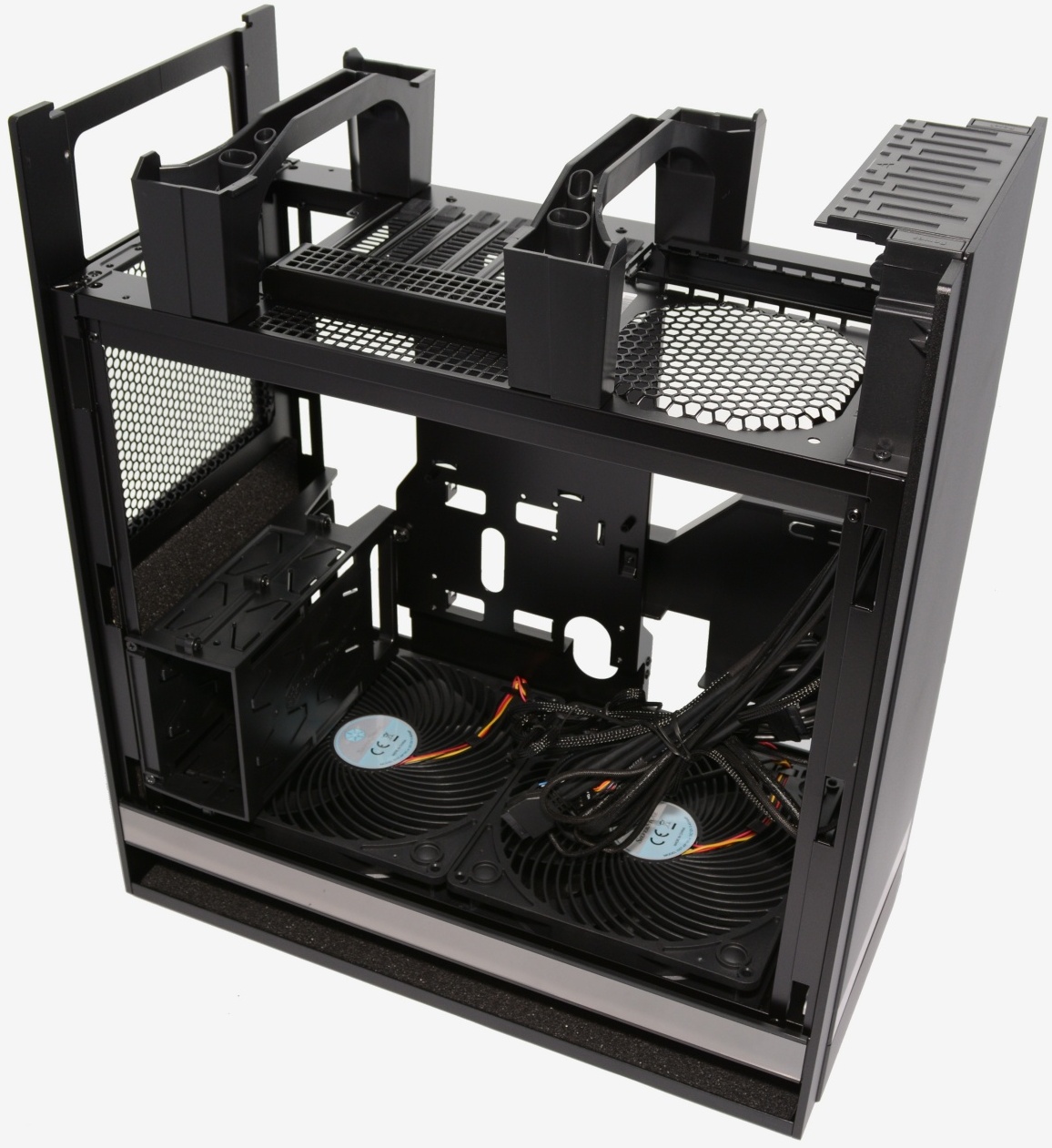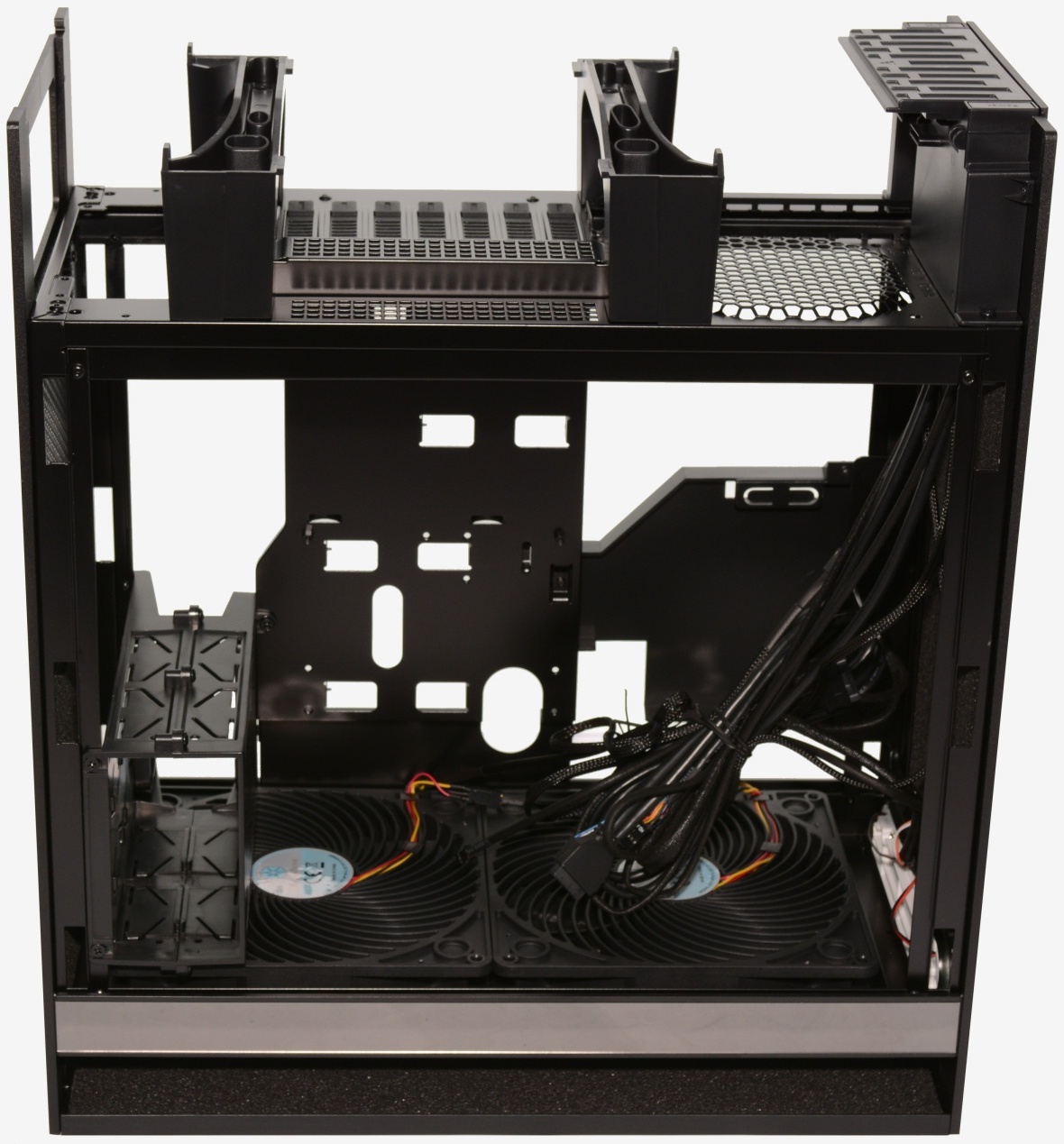FT05 Internal Design
Because the motherboard is mounted at a 90-degree angle, the internal layout of the Fortress 5 is very different from most computer cases. The expansion card bay, optional 120mm exhaust fan and a power supply mounting bracket are on the roof of the chassis.
There are also two 3-pin fan power connectors hooked up to a basic fan speed controller that lets you set the 180mm intake fans to low, medium or high. However, the fan controller is not powered, so each fan must still be plugged into the motherboard.
The expansion card bay, motherboard I/O panel and power supply mounting bracket are all offset into the Fortress 5 so power and data cables have enough room to fit under the case lid where they will travel under a handle at the rear.
While the FT04 had many 5.25" and 3.5" drive bays up front, the FT05 has no 5.25" bays at all. We first saw the NZXT H440 ditch the old 5.25" bays and we had no problem with it. The same is true here.
Getting rid of the bulky 5.25" bays, which are largely unused by power users, frees up room for modern features or to simply improve airflow. As in the case of the FT05 the 5.25" bays have been removed to make the case more compact. The drawback being that the FT05 supports just two 3.5" devices in a plastic cage found in the rear of the case.
While this has helped Silverstone make a more compact case, I don't feel it has helped the company make a better one. While it has fixed the massive waste of space found inside the Raven 5, the Fortress 5's design is still rather limiting.
The problem is the two 3.5" bays, which are positioned vertically to maximize airflow, are mounted directly under the power supply bracket. Without removing them and removing all 3.5" drive support from the Fortress 5, it's not possible to install power supplies longer than 160mm or ideally 150mm. We first ran into this problem when trying to install our first half a dozen power supply candidates.
Silverstone doesn't see this as being an issue as they offer many PSUs that are 160mm or shorter, the most powerful of which is the impressive Strider Gold S 850w. However most high-end power supplies are longer than 160mm, as we found when trying to install ours. Not wanting to sacrifice the only 3.5" drive bays in the Fortress 5, we had to install a less powerful unit in the meantime.
It seems strange that a computer case with support for three full-length graphics cards alongside massive air-coolers is so unexpectedly limited when it comes to the power supply.
Moving past that, we find two massive 180mm Air Penetrator fans in the bottom of the Fortress 5 which, as we mentioned earlier, are connected to an inbuilt fan controller. The design goal for Air Penetrator is to focus airflow into a column that can be channelled through various obstacles inside the case for more efficient cooling performance.
The fans have easily removable dust filters and are rated to work at speeds between 700 and 1200 RPM with an effective airflow range of 1.2 to 3 meters at 80 ~ 130 CFM. All this adds up to an operating volume of 18 ~ 34dBA depending on the speed.
There's almost nothing to be seen at the rear of the Fortress 5 besides a single fan grill that allows the power supply to draw in cool air.
The non-removable motherboard tray features a fairly standard design. Where you would expect to find the motherboard's CPU socket has been cut out to provide rear access for aftermarket coolers, while the rear of the tray can accommodate a pair of 2.5" drives.
Along with the dual 2.5" drive bays there is also room for a slim optical drive. The optical drive can be fitted into the plastic bracket while 2.5" devices such as SSDs fit into place using a pair of screws. The downside to this is that the SSDs and slim optical drive can make cable management a challenge.






